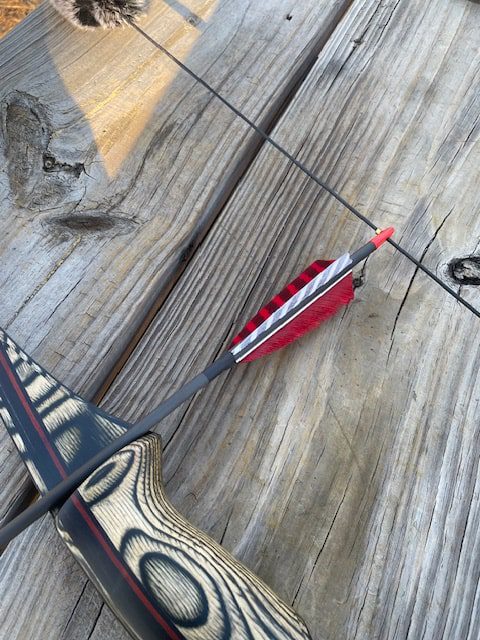
“Experientia docet.” ~Tacitus
Whether you gravitate more towards a longbow or a recurve, the world of traditional archery is intensely rewarding, especially once you start consistently hitting your targets.
Moreover, there is something acutely therapeutic about archery that just isn’t the same about the other shooting sports. Believe me, I love them, and I shoot primarily as practice for hunting, but I’ve had others (friends and strangers alike) report to me how cathartic it is to send arrows downrange.
Something about the fluidity, the relatively peaceful silence of the sport, and the immense satisfaction you get from the arrow striking the bale just where you want it to, is extremely gratifying.
If that weren’t enough, traditional archery is a relatively unintimidating and accessible shooting sport. Anyone can get into it, and fairly quickly at that.
But learn from me. When I started with traditional archery I knew nothing about it. Fortunately, many years later, I know a bit more. Before you buy your first bow and visit a range, here are a few things I had to learn from experience (mostly).
You’ll Want Arrows Fletched with Feathers
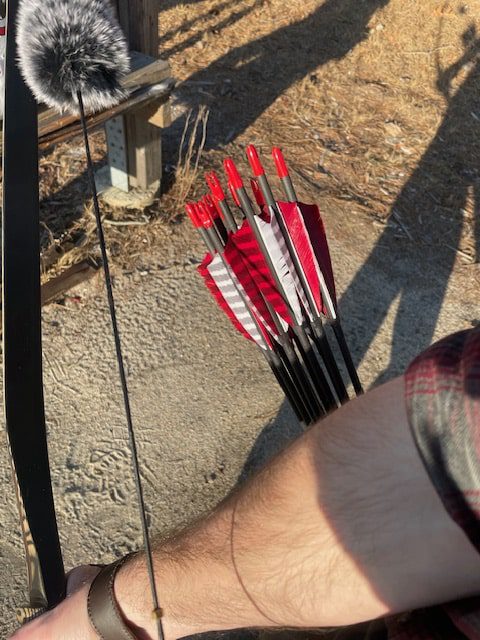
Way back when, when I first started with traditional archery, I was shooting a Ben Pearson Mustang, an unbelievably beautiful, smooth and accurate bow that they don’t even make anymore.
There’s just one thing. I was shooting aluminum arrows fletched with vanes. Here are some of my old arrows for reference. I probably bought them because I got them at Walmart or something like that and they were the only arrows that were available.
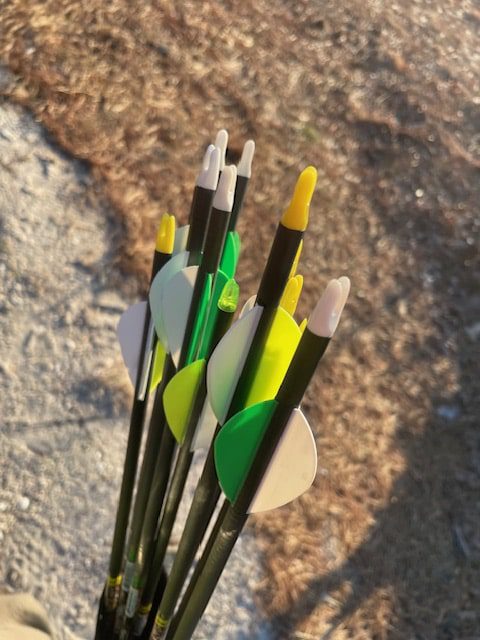
The arrow spine is fine (more on that in a second) but the fletching leaves something to be desired. You see, when you shoot off the shelf (as most traditional archers do) and not off an arrow rest, your fletching will come in contact with the bow’s riser.
That means that the fletching will “kick” off the riser a bit, since vanes are pretty stiff and don’t fold.
The problem here is that it can force your arrows to fishtail off the bow’s riser, which can complicate accuracy.
On the flipside, the feathers, which are used to fletch traditional arrows, will fold when they come in contact with the riser, which means the arrow will fly straighter off the shelf. This will result in more accurate shots, holding all else equal.
The long and short of it is this: you can shoot arrows fletched with vanes from a recurve or a longbow. But notwithstanding the fact that this isn’t customary, it can actually have material consequences in the form of diminished accuracy.
Arrow Spine Matters: You Can’t Just Shoot Any Arrows
In theory, if the nock fits on your serving, you can shoot the arrow. But that doesn’t mean you should. Just like a gun can only fire certain cartridges, arrows must be matched to a bow. This brings up the issue of how stiff the arrow shaft is.
Arrow stiffness is referred to as spine, and believe me, this quality, more than anything else, will impact the accuracy of your shots.
This is because arrows absorb a great deal of energy when you release the string. This forces the shaft of the arrow to flex. The higher the draw weight of the bow and the faster it is, the more the arrow will flex on release.
If the arrow is too flexible, it will bend too violently, throwing it away from your point of aim (one way or the other, though this can be hard to predict). If the arrow is too stiff, the same thing could happen, although in the other direction.
The bottom line is you want an arrow that is just flexible enough for the bow. Unfortunately, I don’t have the means to get into it here, because in order to determine appropriate arrow stiffness, you need to know not only arrow length and the arrowhead weight, but also the speed and draw weight of the bow.
However, the draw weight of the bow is by far the most important factor here, so here’s the general rule of thumb, and take this with a grain of salt.
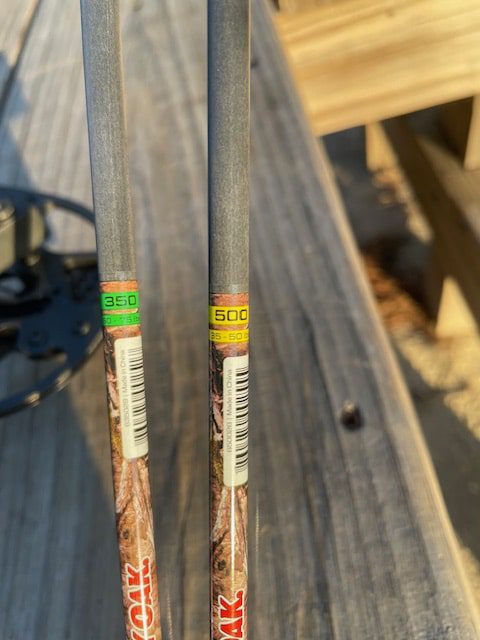
If you’re shooting a recurve and a longbow with arrows between 29-31 inches, and the bow weight is 35 pounds or lower, your arrows should have a spine around 500. If the bow weight is between 35-55 pounds (which is common) and the arrows are between 29-31”, you will need stiffer arrows, with spine ratings between 350 and 400.
Again, I want to stress that this is an oversimplification. To find the exact appropriate stiffness for your arrows, check out a website with a spine selector chart like the one at the previous link.
The Index Fletch Points Away from the Bow
See that white fletch on the arrow above? (At the top of the article.) It’s colored that way for a reason – so the archer knows how to nock the arrow.
It’s called the index fletch (sometimes also referred to as the “cock feather”) and it’s colored differently from the other fletchings so you remember to nock the arrow so that this one points away from the riser.
If you nocked it the other way, what would happen is that the fletch would run into the riser as the arrow left the bow, and it would kick off the shelf.
We don’t want this, as it will cause fishtailing, so for new archers, remember this: nock the arrow so the index fletch is pointing away from the riser, as shown in the image below.
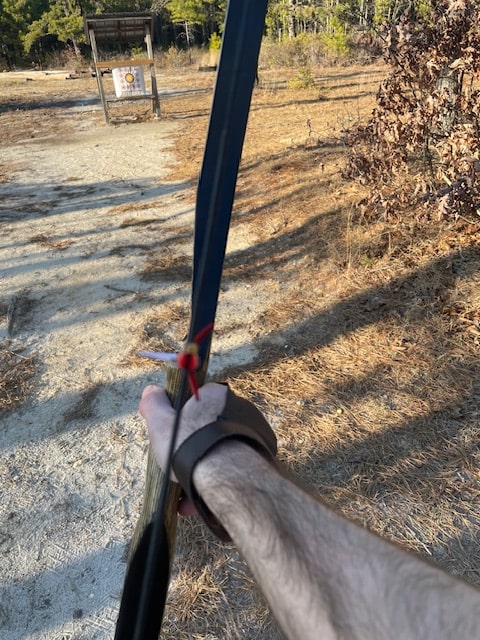
Never Dry Fire a Bow (This Is Not Just for Traditional Archers)
This is actually not something I learned from experience because fortunately I knew enough not to ever dry fire a bow.
Anyway, dry firing refers to the process of shooting a bow without an arrow nocked. It is something you should never do, period.
Doing so will likely destroy your bow or will cause damage that will eventually render it unusable.
The long and short of is it that the limbs store a lot of energy, that is then transferred to an arrow when you shoot it. If you don’t have an arrow nocked, all that energy has nowhere to go, and the bow has to absorb it all.
I’m not getting more into it than this. Just take this away: never dry fire a bow under any circumstances.
Canting Your Bow Is Not That Big of a Deal
Compound shooters will look at you like you have three heads if you cant a compound bow. That’s because their bows use sights that don’t work if the bow is not perfectly level.
But this is not how traditional archery works. If you aren’t shooting with a bow sight, shooting an arrow is like throwing a baseball or a football. It’s all athletic. Think about it. You can throw a baseball to your mate and get it where you want it to go, yet there are no sights on a baseball.
This is just how archery works. After you shoot for a while, you learn to instinctively “know” where the arrow will fly, based on the bow you’re shooting, the arrow itself, and how you’re drawing and orienting the bow. In time, you can get quite accurate with it. While i may not be one of them, there are traditional archers in the world who can shoot a tablet of aspirin out of the air, cant or no.
So canting the bow is not a big deal, and in fact, I prefer to shoot on a cant as it helps me keep the arrow securely on the shelf.
Get Appropriate Arrowheads
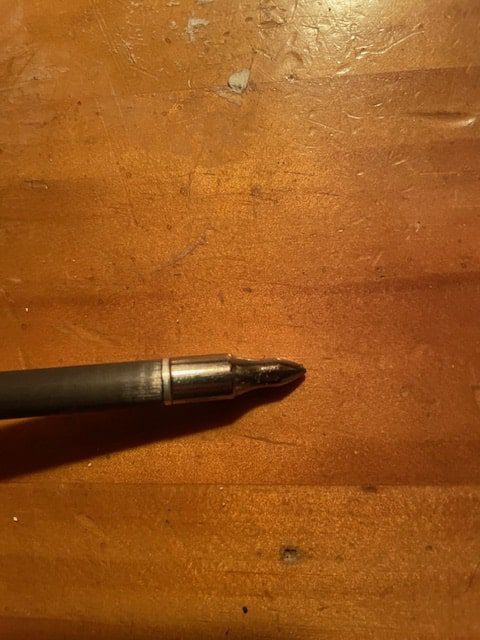
If you think an arrow is supposed to be fitted with an edged head, you’re dead wrong, and this can literally get you thrown off of ranges.
Broadheads are, for the most part, expressly prohibited at public ranges, not only for the danger they present but because of the damage they do to targets.
Broadheads have one place and one place only, and it’s hunting.
Besides, broadheads are extremely expensive and if you shoot one at a bale just one time, you’re probably getting back a mangled broadhead anyway, so why would you do that?
Field points are for the range. That’s what you should have on your arrows.
Take Care of the String
The most disposable part of your bow is your bowstring, and as (basically) the only moving part, it’s the thing that’s going to wear out first.
The single best thing you can do is keep your bowstring well-waxed. There are specific bowstring waxes you can buy for this which are silicone based.
An unwaxed bowstring is likely to fray and will certainly wear out faster than one which is kept waxed. The wax binds all of the fibers of the string together and helps prevent them from prematurely wearing.
Without wasting too much more space on it, suffice it to say that you need to keep the string waxed.
Don’t go overboard, though. Run a little up each side of your string while the bow is strung, then use your fingers to warm up the wax until the string has absorbed it all. A little bit goes a long way.
You Should Absolutely Install String Silencers
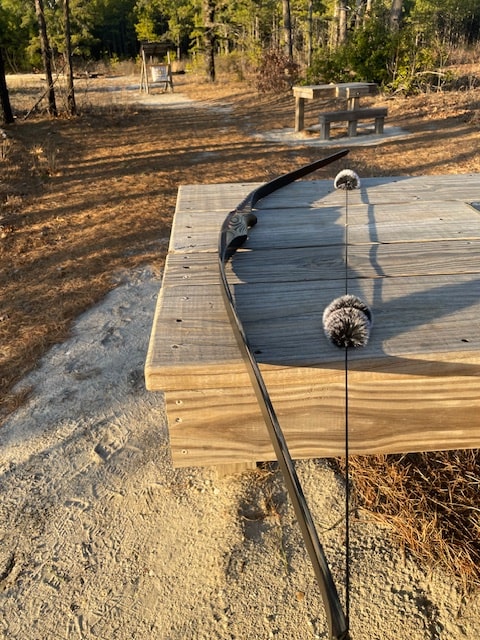
String silencers may look cool, and they may make your bow a lot quieter, which is a good thing, but these are not the reasons I’m suggesting that each and every one of your traditional bows should have them installed.
The reason I’m a cheerleader for string silencers is because they’re basically like limb dampeners for traditional tackle.
When you shoot a bow, a whole lot of energy courses through it, and some of that vibration gets trapped in the limb and string. Not only is it loud, but it does damage to the bow itself.
A bow that hasn’t been dampened with silencers is at a higher risk of delamination, which is a condition that occurs when the layers of wood, fiberglass and other materials used in the construction of the bow start to come apart.
For the most part, delamination issues are irreversible and result in permanent damage to the bow. An act as simple as installing some string silencers can help you avoid this problem.
…And a Nocking Point
You don’t absolutely need a nocking point but installing one will help ensure that you nock the arrow in the same place every time, and that your arrow doesn’t porpoise when you shoot it. (Porpoising is when your arrow fishtails vertically after it leaves the riser, and is not a good thing with respect to accuracy.)
I have already published on how to install a nocking point so for further information, please see my previous post on how to install a nocking point.
Understand Range Etiquette
If you want to enjoy your time on the range, you’re going to learn what sorts of behaviors are permitted there. More specifically, you’ll want to learn what sorts of behaviors are not permitted.
First things first, do not nock an arrow unless the bow and it are pointed downrange. Pointed a nocked arrow anywhere but downrange is like exercising poor muzzle discipline with a gun and will get you thrown off the range.
Second, don’t shoot at anyone else’s targets. I’m not sure why some people do this but I have seen it before.
Third, and this is most critical, you can not walk downrange for any reason other than when the range is cleared. To clear the range, finish shooting your group, look to the other archers sharing lanes with you, and yell “clear.”
Make sure you get visual recognition from all other archers that you’re in agreement that the range is clear before you retrieve your arrows. If you don’t, that’s another thing that can get you booted.
If there is a range master or a safety officer, you don’t need to be the one to call a clear – he or she will do that for you, most of the time.
If you are not going downrange to retrieve arrows, do not handle your tackle while others are downrange. It’s not good range etiquette. If there is a bow rack, hang your bow on the rack while others are downrange.
These are some universal rules for range etiquette, but there may be others at the range where you shoot. Make sure you spend some time reviewing the range rules before you go shooting.
Use an Appropriate Draw
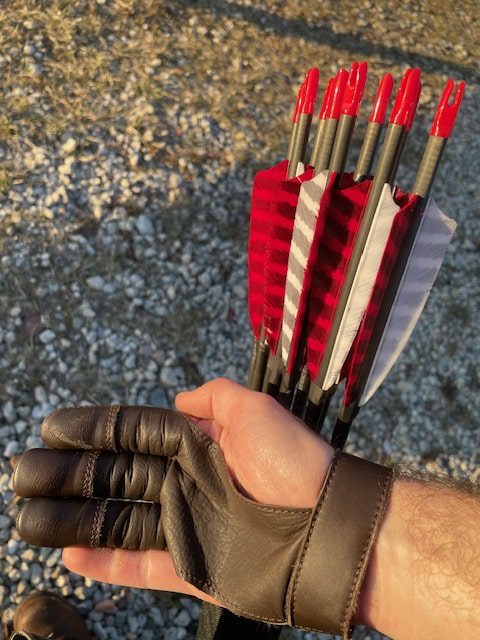
Lastly, it’s important that you know what you’re doing with your bow – specifically, that you know how to draw.
I’m a split finger, Mediterranean draw shooter. You don’t need to; you can go three under or practice Mongol draw for all I care. What you can’t do is pinch.
I’m not sure what the reason for this is but some people think you’re supposed to pinch the arrow once it’s nocked in order to draw it.
This is a bad idea, and a very bad one at that. The pinch draw is not practical except for the lightest of bows and even then it is not widely practiced because it is inherently fault-prone.
The thing with the pinch draw is that it’s easy for the string and arrow to slip out of your grip while you’re shooting, which will result in an unintentional release. The fact of the matter is that the pinch draw does not allow you adequate control over your shooting technique. At best it is inconsistent and at worst it is dangerous.
Therefore, adopt an appropriate drawing protocol and stick with that.
Otherwise, You Don’t Need Much to Get Started
One of the great things is that traditional archery is so accessible. Your bow and arrows themselves will likely be expensive, as much as or more than compound equipment, but you also won’t need to worry about making adjustments to the bow, setting draw weight and length, and you also, for the most part, won’t have to deal with weird arrow rests, bow sights, and other arcane equipment.
Despite the skill involved, it’s one of the simplest shooting sports, and also one of the most rewarding. Get yourself a bow, some matched arrows, keep these pointers in mind and then find a range near you and get started with it.
Be safe.
~The Eclectic Outfitter